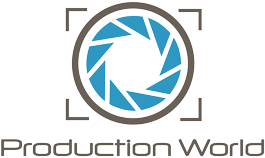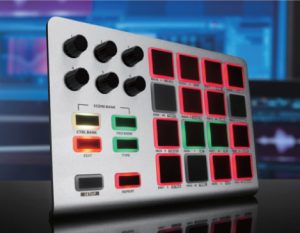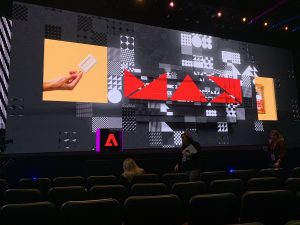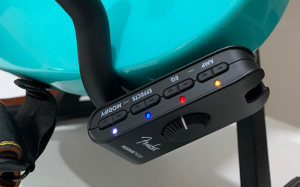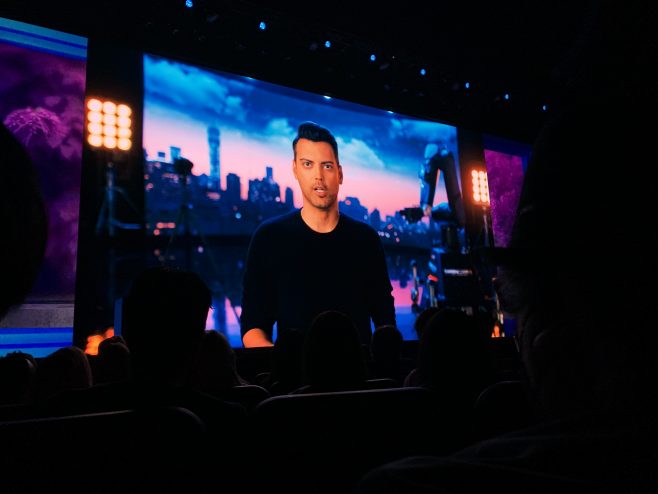Adobe’s Day One Keynote has wrapped up, and the Adobe team, led by Shantanu Narayen and hosted by Scott Belsky, delivered a content rich two hour session to an exuberant 6,000 attendees.
While the bulk of the Creative Cloud flagship applications were discussed, there was a distinct focus on quick content uber-app Adobe Express, new features within – and derived from – Frame.io, collaboration across application teams, 3D and immersive tools and their place in the future, as well as Adobe’s recent acquisition of Project Design and Development toolmaker, Figma.
A quick look at Adobe Premiere showed off Auto Color Correction and Auto Audio Mixing. While Color Correction is as it sounds – getting footage into the ballpark of where we’ll likely want it color-wise, while leaving it up to us to still tweak and perfect – Auto Audio Mixing includes a wealth of Sensei-powered features. While auto ducking has been in Premiere for a short time already, the show was dazzled by Premiere’s new ability to to cleanly shorten or lengthen an audio track to any degree to suit a project.
Also added to Premiere is the Frame.io Review Panel, which is directly integrated into the application, giving editors and teams direct access to Frame’s review and approval functionality without slowing down post production. Editors can use markers to upload frame-specific comments to Frame.io, and through the web application teams can use Frame as they normally do, only their notes and annotations will automatically appear in Premiere’s Frame.io Review Panel.
Speaking of Frame.io, Founder Emery Wells joined MAX virtually to discuss the latest Camera to Cloud (C2C) functionality updates. After announcing that there was direct, in-camera Frame.io C2C integration in the Fujifilm X-H2S, RED V-Raptor and V-Raptor XL, Michael Cioni jumped in to get detailed on how the process works and how faster bandwidth and tighter hardware and software integration were revolutionizing the production workflow.
After Effects’ addition of Content Aware Fill is still dazzling, but it received a cheer for Selectable Track Mattes (think using one track matte but applying it to multiple layers!), and Keyframe Color Label, which allows motion designers to change the color of their keyframes, and even add them to label groups.
We’ll have more updates following Day Two, so keep checking back with ProductionWorld.net!
